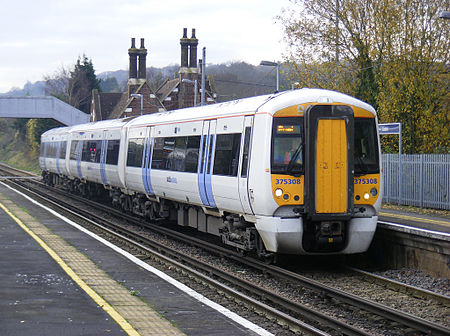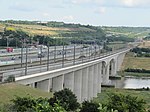Cuxton railway station
1856 establishments in EnglandDfT Category F2 stationsFormer South Eastern Railway (UK) stationsKent railway station stubsRailway stations in Great Britain opened in 1856 ... and 4 more
Railway stations in MedwayRailway stations served by SoutheasternTransport in MedwayUse British English from August 2015

Cuxton railway station is on the Medway Valley Line in Kent, England, and lies well to the east of the village of Cuxton. It is 33 miles 36 chains (53.8 km) down the line from London Charing Cross via Strood and is situated between Strood and Halling. The station and all trains that serve the station are operated by Southeastern.
Excerpt from the Wikipedia article Cuxton railway station (License: CC BY-SA 3.0, Authors, Images).Cuxton railway station
Station Road,
Geographical coordinates (GPS) Address Nearby Places Show on map
Geographical coordinates (GPS)
| Latitude | Longitude |
|---|---|
| N 51.374 ° | E 0.462 ° |
Address
Cuxton
Station Road
ME2 1AD , Cuxton
England, United Kingdom
Open on Google Maps








